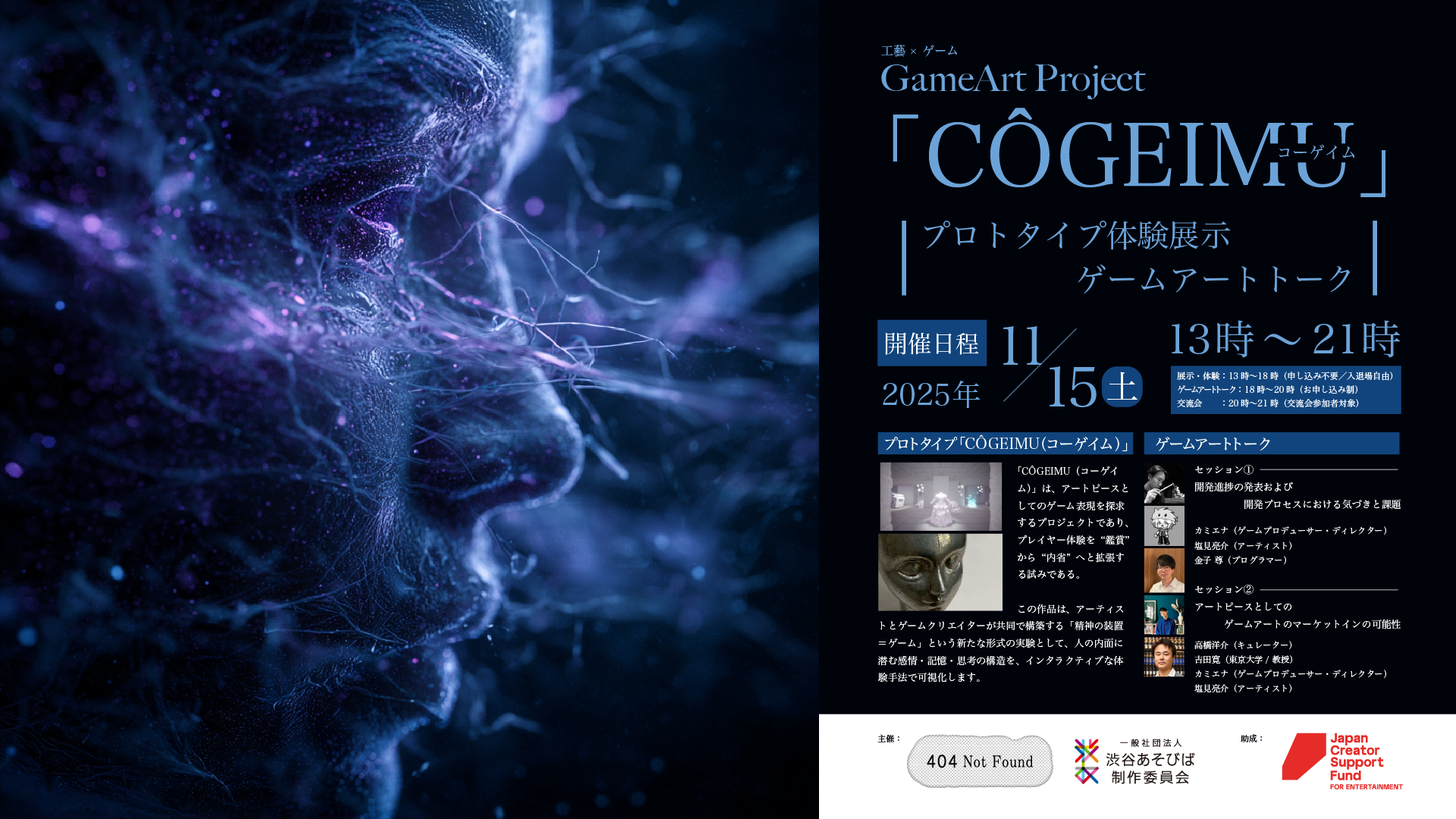
ars●bit will be holding a prototype presentation exhibition for their GameArt project “CÔGEIMU” at 404 Not Found on November 15th. This project, a collaborative effort between artist of metal smith Ryosuke Shiomi, a recipient of ars●bit training, and game creator Kamiena, aims to create new forms of expression that transcend the boundaries between games and art.
At this event, participants will be able to experience a prototype of “CÔGEIMU.” There will also be a talk session bringing together creators and experts to discuss the possibilities that the blending of games and art can unlock for both genres. The talk session will feature curator Yosuke Takahashi, a recipient of ars●bit training, as well as mentor Hiroshi Yoshida, professor at the University of Tokyo.
Participation is free; however, you will need to sign up for Peatix in advance to view the talk session.
Event Overview
Event Title:
[ars●bit] GameArt Project
“CÔGEIMU” Prototype Exhibition & Game Art Talk
Date: November 15, 2025, 1:00 PM – 9:00 PM
- Exhibition & Experience: 1:00 PM – 6:00 PM (No registration required, free entry and exit)
- Game Art Talk: 6:00 PM – 8:00 PM (Registration required)
- Networking Event: 8:00 PM – 9:00 PM (For networking event participants only)
Venue: 404 Not Found (4th floor, Shibuya Sakura Stage)
Participation Fee: Free
*Talk attendees must purchase one drink.
Game Art Talk Registration Information:
Peatix
https://arsobit-gameart-talk01.peatix.com
Registration is required for the Game Art Talk only.
The first half of the exhibition and experience events are free to enter and exit as you please.
Exhibition Contents
Exhibition 1:
[ars●bit] GameArt Project “CÔGEIMU” Prototype
A monitor is embedded in the hollow pupil of a face mask, allowing players to peer into the game.
“CÔGEIMU” is a sculpture by Ryosuke Shiomi. When players peer into its pupil, they see a monitor behind it, and a mind-exploring game developed by Kamiena unfolds.
The concept of this work is “a project exploring game expression as an art piece, an attempt to expand the player experience from ‘appreciation’ to ‘introspection.'”
Through the “eyes” of others, players reflect their own consciousness, as if peering into their mental world. The monitor embedded in the hollow face mask reflects not a character, but their own “inner self.”
This work is an experimental new form of “mental device = game” jointly constructed by artists and game creators, visualizing the structures of emotions, memories, and thoughts hidden within people through interactive experiential methods. By opening up the game art development process, this exhibition and talk event aims to further develop future endeavors.
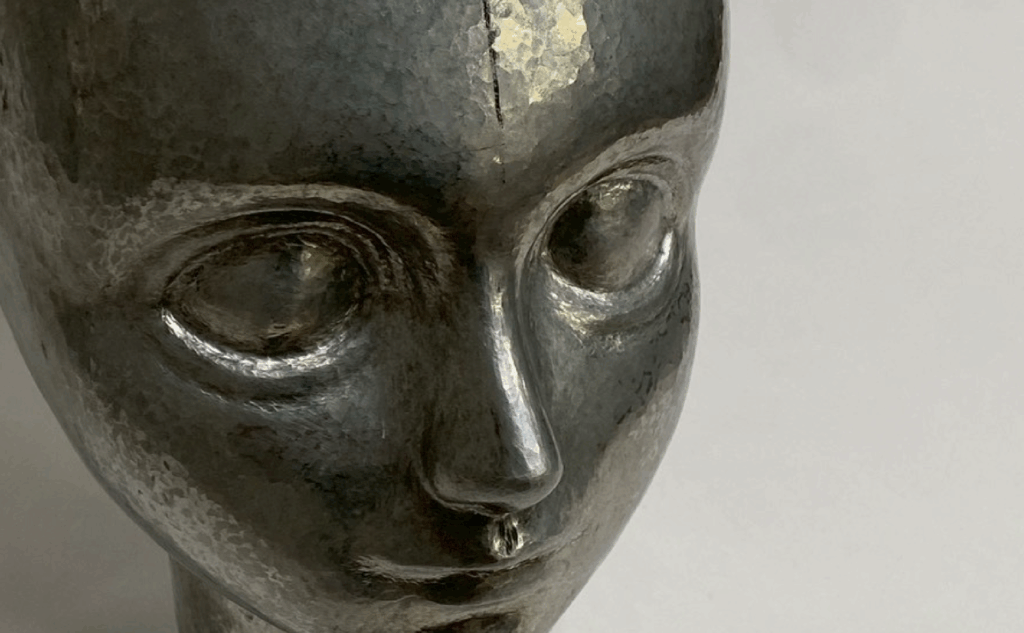
Art Cabinet in Development
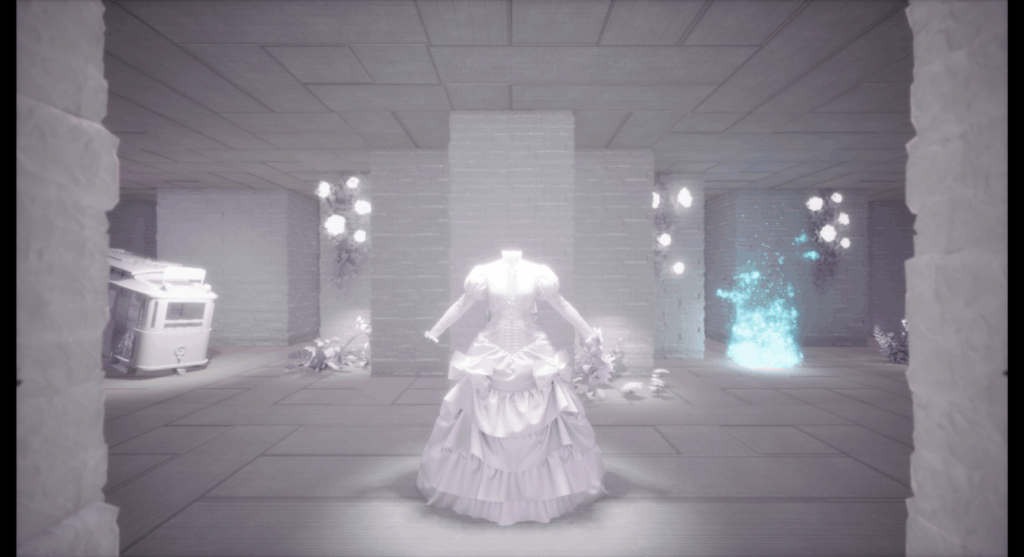
In-Game Scene Captures in Development
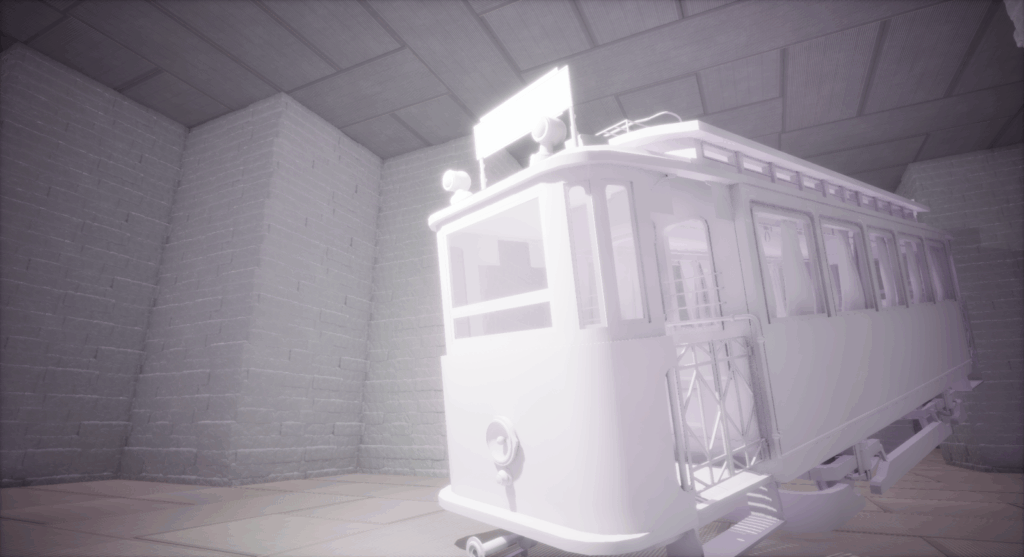
In-Game Scene Captures in Development
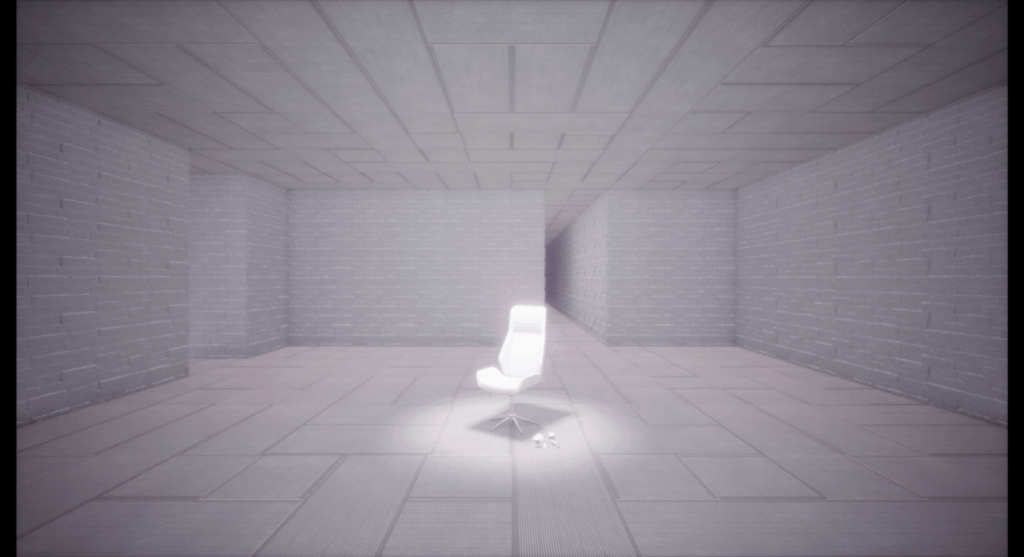
In-Game Scene Captures in Development
Exhibition of Works by Training Participants 2:
Kamiena (Game Producer/Director)
Ryosuke Shiomi (Metalsmith)
Game Art Talk:
Game Art Talk 1:
Development Progress Presentation and Realizations and Challenges in the Development Process
Time: 6:00 PM – 7:00 PM
Speakers:
Ryosuke Shiomi (Metalsmith)
Kamiena (Game Producer/Director)
Takashi Kaneko (Programmer)
Moderator: Takeshi Ishikawa

“CÔGEIMU” is an exploration of “games as art,” where the creation itself is both an experiment and a dialogue. In this session, an artist and a game director will share the realizations, conflicts, fusions, and confusions that arise in the process of shaping the same work from different perspectives.
Based on early-stage prototypes, this session will explore the relationship between game rule design and artistic concepts, new expressive possibilities brought about by technological constraints, and how to elevate the “player experience” into a work of art. This session will reveal the real back-and-forth of thought that takes place within the creative process.
At the intersection of art and games, this session will document the moment when the creative process itself becomes a work of art, and through this practice, explore the future of “Art x Game.”
Game Art Talk 2: The Potential and Challenges of Market-In for Game Art as Artwork
Time: 7:00 PM – 8:00 PM
Speakers:
Ryosuke Shiomi (Metalsmith)
Kamiena (Game Producer/Director)
Takeru Kaneko (Programmer)
Yosuke Takahashi (Curator)
Hiroshi Yoshida (Professor, Graduate School of Humanities and Sociology, The University of Tokyo)
Moderator: Takeshi Ishikawa

As digital expression expands the realm of art, can “games” emerge as new art pieces? In this session, practitioners working across art and games will engage in a multifaceted discussion about how “games as artworks” can penetrate social, economic, and cultural markets. Against the backdrop of new forms of ownership, appreciation, and experience born from NFTs and media art,
how can we redefine the interactivity, temporality, and community inherent in game art? We will also consider creating systems for exhibiting, selling, and continuously cultivating artworks, as well as their potential for connection to art fairs and collector markets both domestically and internationally.
As art shifts from “static” to “experience,”
how do games emerge as “living art” in this context?
This talk session is a tentative exploration of that future.
Participating Creators/Speakers

Kamiena (Game Producer/Director)
*Recipient of the “ars●bit” Project Support Program
An indie game creator with a passion for crafting, who sees it not just as a process of creation but also as a process of delivery. Specializing in teamwork, she plays a wide range of roles, primarily in direction and production, including planning, scriptwriting, programming, and illustration. Since her student days, she has had an interest in craftsmanship in general, and excels at creating works that approach play from multiple angles and have a kawaii atmosphere that can be enjoyed by both men and women.
Comment:
Unlike previous game productions that relied on “data duplication,” this project explored the new possibilities of “one-of-a-kind creations” by fusing art and games. Furthermore, when appreciating art, we perceive ourselves as “peeking into” the artist’s thoughts and experiences that lie beyond the surface of the object.
This time, I’m aiming to translate that feeling into a gaming experience, allowing for an experience that “explores the inner workings of the work.”
I’m also excited about the challenge of combining games with traditional Japanese metalworking. The image of a metalworker hammering metal to gradually create a shape is truly one of “infusing soul” into creation, and I plan to create a work themed around the idea that “things have souls,” as reflected in the cultural view of the eight million gods.
Games are interactive works in which the story and experience are completed through the player’s choices and actions. With this work, I hope to go beyond simply creating a comprehensive work of art using digital assets like visuals and music; I also hope to explore ways to incorporate the experiences and memories created between the user and the work, making them a part of the artwork.

Ryosuke Shiomi (Metalsmith)
*Recipient of the “ars●bit” project
Using traditional Japanese metalsmithing and engraving techniques, he creates primarily armor-style works with themes of pride and prayer. He works with a variety of materials, including silver, copper, brass, and iron. Born in 1989, he completed his Master’s degree in Metalsmithing at the Tokyo University of the Arts Graduate School of Fine Arts in 2016. His exhibitions include “Material Reincarnation – Beyond the Material / Gifu Prefectural Museum of Art” in 2021, “BIWAKO BIENMALE / Hikone City” in 2022, and “Sunday Art Museum: Contemporary Transcendental Crafts 2” in 2023, among many others.
Comment:
I believe that games are a form of comprehensive expression that combines visual, textual, and audio information with the player’s time and actions to offer an experience of immersion in the game’s world. While each element requires a high level of perfection, I feel that achieving harmony among them is the most difficult aspect of this project. Additionally, in this project, the game’s exterior plays a major role in creating the game’s unique worldview.
I am primarily responsible for the exterior, but it must also serve as both an object and an artwork that introduces the player to the game world. This is a new challenge for me, a metalwork piece that is both an object and a game itself.
In my own work, I am always trying new techniques, motifs, and improving my skills, but working with others allows me to encounter themes and ideas that I would not have tackled alone. It is an intriguing experience to see how new elements can be combined with my own worldview to create a work of art. I hope that the result, combined with the game’s content, will lead to a new experience for players.

Takashi Kaneko (Programmer)
An art and game creator whose goal is to create “a page in Japanese culture.” After graduating from high school, I spent two years reclusive, but was saved by games, Japanese art, and anime, which led me to decide to become a creator. After self-studying programming and 3DCG, I now work at an art collective based in Tokyo.
Comment
Through programming, I have pursued a logical aesthetic born from meticulous, calculated composition rather than organic chance. By switching from traditional digital production to the analog process of “hammering,” I have discovered new possibilities in fusing digital signal expression with analog input and output.
While I currently focus on digital input and output, I am confident that in the future I will explore interactions that combine organic, unpredictable input and output, allowing me to express the experience of never-repeating situations and the uncontrollability of interacting with real people.
I also believe that the biggest difference between games and art is the clear existence of success and failure. However, the viewer’s reaction to a work, whether it’s a game or art, will vary depending on their perspective and experience. Whether we perceive “failure” as an experience or a negative one, artworks reflect the inner world of the viewer. The impressions we have when viewing art vary widely. The most valuable thing we gain from experiencing artwork is that it deepens our own understanding of ourselves and inspires us to change our way of thinking. I realized that this introspective value is something that games and art share.
Talk Guest

Yosuke Takahashi (Curator)
*Recipient of the “ars●bit” Project
After serving as Chief Curator at the 21st Century Museum of Contemporary Art, Kanazawa and as a curator at the Kadokawa Musashino Museum, he went independent. He currently serves as curator at the GYRE high-fashion building in Omotesando, a member of the Molecular Robot Ethics Research Group, and a lecturer at Kyoto University of the Arts. His research focuses on the relationship between technology and art since the 1990s, with a focus on “art after the demise of the modern view of humanity.”

Hiroshi Yoshida (Professor, Graduate School of Humanities and Sociology, The University of Tokyo)
*Leader of the “ars●bit” Project
An expert in aesthetics, sensibility, and the theory of representational culture. As a leading expert in digital game research, I explore the aesthetics of games.
▼Related Information
Organized by:
Shibuya Asobiba Production Committee (General Incorporated Association) / 404 Not Found
Supported by:
Cultural and Artistic Activities Foundation Strengthening Fund (Creator Support Fund)
